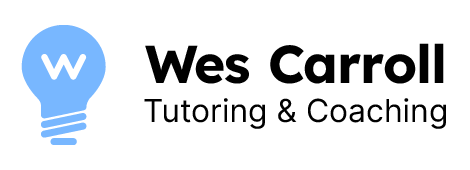Spring is the busiest time of the year for most high school students. In addition to finals (be it AP, IB or otherwise), some of the most important standardized tests dates fall into the months of April, May and June. Any student can navigate this busy time with the right help, but being your own advocate is absolutely essential for success at the end of the school year. This post should help you help yourself along the right path…

Should you fail to pilot your own ship, don’t be surprised at what inappropriate port you find yourself docked.
Tom Robbins
The more decisions that you are forced to make alone, the more you are aware of your freedom to choose.
Thornton Wilder
A good plan violently executed now is better than a perfect plan executed next week.
George S. Patton
Earlier you read about the importance of a framework for setting your own direction. I’ll explore that in more detail now.
Getting help
As you may have noticed, making important life decisions is mostly regarded by our culture as something best left to the experts: first your parents make decisions for you, then college counselors, then graduate advisors, then professional mentors and managers, and on and on and on.
This isn’t necessarily such a bad thing: experience often leads to better results. (Also, there are certain kinds of mental tasks related to decision-making that become biologically easier in ones early 20’s, so advisors for students may be especially helpful.)
Sometimes these experts will be amazing professionals with fantastic, groundbreaking advice for you, and sometimes they’ll just be a “safety net” of decent advice, so your very worst decisions won’t be too bad.
You need to be able to tell the difference. Ultimately, you’d prefer to make your own decisions, perhaps informed by the wisdom of others, but not defined by it or by them.
Going it alone
Next, consider that most decisions are informed by your “autopilot.” You make decisions at least partly (if not entirely) by seeing that the current situation matches some past situation (possibly in relevant ways, and possibly not), and then doing in the present whatever you think was the right thing to do in the past. (See Gladwell’s Blink and Kahneman’s Thinking, Fast and Slow for more in-depth knowledge on this.) This is not a bad thing, but it’s useful to understand how to balance this important but unconscious force with your conscious, executive mind.
And even your conscious mind can have arguments with itself. Aligning your identity, your emotions, and your cognition behind a single decision can be hard work. For example, there might be disagreement between what you want, what you think you want, and what you want to want. It’s so complicated that it can be hard to get started.
But a good system can help you overcome these difficulties. Through practice, you’ll come to better understand how to align these drives within yourself. The process of making decisions will become easier. I recommend you find one you like. To get you started, I’ll provide one of my own.
Mine is a method for making decisions that helps balance your mind, heart, and gut. So it avoids a lot of the problems with “unbalanced” decision making. However, it takes a long time to get really good at it, so think of this as a long-term project. If you give this a try for now, and keep up with it, then sooner or later this method will become part of what makes you especially capable.
It works on problems big (“What should I do with my life?”) and small (“How can I solve this difficult homework problem?”). I call it the Pilot Program.
Before we get too far into it, let me acknowledge that there are many, many excellent processes out there for setting and achieving goals. There are two ways in which the Pilot Program is different from most:
- It uses a “ready, fire, aim” strategy. This means that you start quickly, even before you have all the details worked out, and you fine-tune everything later. This strategy helps you avoid overwhelm and perfectionism, and it helps you build momentum fast. Yet it’s also accurate over the long run, because of the fine-tuning that is built into the system.
- The focus of the Pilot is on constant improvement, which allows it to transcend mere goals and aim for more powerful targets: vision and values. As a result, the Pilot Program is not limited to short-term projects, but rather can be applied on a large scale—as large as you can imagine.
The five parts of the pilot program
The five parts of the Pilot Program are: a Desire, an Action List, a Journaling Plan, Course Correction, and a Finish Line.
Desire: What I want to have achieved, what I want to have, what I want to have done, or what I want to be.
Action List: Specific actions I should take in order to get closer to that vision
Journaling Plan: The location of my notes on my progress, and my schedule for reviewing the notes
Course Correction: The actions I should take in order to fine-tune all five of these parts, as I gain experience by doing them.
Finish Line: How I’ll be able to tell that I’ve succeeded.
A quick example
Here’s a quick example of how this might work:
Desire
To be a straight A student.
Action List
1. Discover what straight-A students do that is different from what I am used to doing
2. Identify the parts I can’t easily do
3. Learn how to do those things
4. Turn that learning into habits
Journaling Plan
Every week, I write down in an online journal what I’ve done during the week that is likely to raise my grades.
Course Correction
Every week after journaling, I read through the whole journal from the beginning, and then I do two things: (1) make any changes to the Desire, Journaling Plan, action list, Course Correction, or finish line, according to my best judgment at the time, and (2) write notes telling myself what I should try to do the following week in order to stay in alignment with those parts.
Finish Line
I have a report card containing nothing but A’s for the current grading period.
A life-size question
Now let’s say you’re trying to figure out what to do with your life. That’s an awfully big question! But the size of the question isn’t a problem. Here’s how it might work:
Desire
To know what I want to do with my life.
Action List
1. Ask some older people what they do, and whether they like it
2. Think about what they say and how it applies to me
Journaling Plan
I record all the interviews, and after each one I listen to it again and take notes, focusing on how I think the ideas in that interview apply to me (or not).
Course Correction
I think about which interviews seem most and least helpful, and I use that information to determine what sort of person to try to interview next.
Finish Line
I have written down a specific “life Goal” that I believe is worth pursuing.
A research project
Here’s a different way in which someone might use the Program to come up with their Desire:
Desire
To know what I want to do with my life.
Action List
1. Ask myself what I want to do
2. Pay attention to what I find myself saying
Journaling Plan
Every time I ask myself the question, I come up with a one-sentence answer and write it down on a piece of paper taped to my wall.
Course Correction
Once a month, I spend ten minutes reading the paper and remembering what made me give each of those answers.
Finish Line
I have noticed myself giving the same answer three or more times.
As you can see, two different people could use this method to solve the same problem, and wind up with very different paths and very different results.
Let me be clear: the method isn’t easy. You have to really think about each of the parts, and that takes time. Sometimes, it also requires courage. But the personal attention you put into it is also a major strength of the Program. Since the parts all come from you, they aren’t nearly as vulnerable to anyone else’s bias. You are making all the decisions. You are also deciding the very rules of the game. This means that your decisions using this method are more likely to have high integrity. In other words, true to yourself.
So you get to decide how much “outside bias” you’re going to let in to your process. Let me suggest some guidelines for deciding how much bias to let in, and how to avoid that bias when you want to.
How much bias
A good guideline is replicability: if many people before you have gotten what you want, and it’s clear how they did it, it’s probably best to let others’ guidance help you. This can mean researching how to do it, or trusting an expert to help you find the best path. Note: this doesn’t mean to relinquish all control (or worse, responsibility for the outcome); it just means that you’ll probably do better with advice than without.
By contrast, if the result has not been replicated many times, or if it isn’t clear how it’s been done in the past, then you may be the best guide for your own process, because (1) you care more than anyone else, and (2) you probably know yourself better than anyone else. (One key exception: one or both of your parents might be even better guides than you yourself are.)
Another good guideline is boundedness: problems and questions that are well-defined, short-term, multiple-choice, and/or straightforward are usually best answered with outside help or bias. However, more nebulous, long-term, open-ended and difficult-to-even-define problems and questions usually benefit from removing as much bias as possible from the decision process.
One last thing: it’s okay to use one method now and another later. For example, many people enlist the help of a college counselor (high bias, high expertise) to figure out where to go to college, and only later use their own process (low bias, high integrity) to determine what sort of career to build on the foundation of the college career.
How to avoid bias
Read through each line of your analysis. Ask yourself: why is this here? Whenever you have a hard time answering that question, find and remove the bias.
How bias can help
The form of the question often gives you some idea about what kinds of answers would be good or bad answers, and this can help you, especially when you’re just getting started.
For most problems, there are solutions that are considered “out of bounds.” That is: there’s a strong sense of what you are “allowed” and “not allowed” to do. For example, take the SAT. There, it is not considered valid to write in your own answer choice on the multiple-choice sections. This means that most problems carry with them implicit hints about how the problems should be solved. As you learn to recognize bias, you will learn to recognize solution “hints.”
One other way in which bias can help is that it can show you what everyone else has tried, so that you can try doing the opposite. Some very successful companies, for example, got their starts by trying to do what was considered at the time to be “obviously” impossible.
How eliminating bias can help
At its most extreme, the Pilot Program helps you to examine all the possibilities. Even the “crazy” and “impossible” ones. So make sure you take advantage of that leeway by including all the “outside the box” possibilities in your analysis.
Summary
Making your own decisions is actua”y a lot harder than it sounds. A reliable method helps. Here’s one such method. Getting good at it really pays off.
Expert level
Once you get comfortable doing this, remove the explicit Desire and Finish Line from a project, and continue only with the Action List,
Journaling Plan, and Course Correction.
You’ll often find that an area of self-improvement is made much more powerful by removing the “fixed destinations” from your thinking and framework, and instead, putting your focus on open-ended, continuous improvement. This is related to the Mindsets described in Chapter Five.
Creating the habit of continual improvement, where it’s about always taking the next step (Action List, Journaling Plan, Course Correction) is one of the most powerful meta-habits you can build.



0 Comments